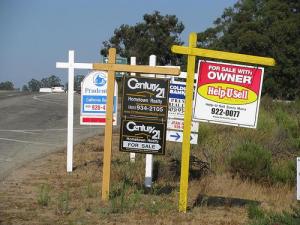
The following was originally posted on Take Me Home. Virginia Organizing woud like to note that the Virginia General Assembly killed several bills this session which could have helped Virginia homeowners facing foreclosure. Senator McEachin and Senator Peterson both sponsored important legislation to address the issue of foreclosure in Virginia, only to see it die in a Senate subcommittee. This is why we must speak up so that our elected officials will be forced to listen to citizen voices over the banking industry!
This is a guest post by Amanda Pohl. Amanda is a first year student in the MSW program at VCU and current intern for Housing Opportunities Made Equal of Va (HOME). She received her M.S. in Patient Counseling from VCU and her M.Div. from Baptist Theological Seminary of Richmond.
Foreclosures in Virginia will increase in the near future, but there are signs of hope and recovery in our housing market. In order to preserve our fragile economic recovery and lay the foundations for robust job growth, we must prevent unnecessary foreclosures . Government, banks, the mortgage industry and non-profits must do everything they can to keep paying Virginia families in their homes.
Over the past few years, foreclosures have been on the rise for a variety of reasons. There were a lot of loans written in the early to mid-2000’s called subprime and alternative loans. These products were designed for people who may not have qualified for a traditional or “prime” mortgage, so companies that used these loans were able to charge higher rates to lessen their risk.
One of the most infamous of these alternative products was the “interest-only” loan that allowed people to obtain a home that was more than they could afford at the time, but because the interest was deferred for several years, they could make the current payments. The logic was that in a few years, they would inevitably be making more money and would either be upgrading to a new home or able to make the higher payments. When interest began being charged on the homes, many people could not afford the payments. They had no equity in the home because they had only been paying interest to the lender, so when home values dropped, they had no ability to refinance these loans into more manageable terms. Subprime and alternative loan foreclosures rose quickly and peaked in late 2008-early 2009.
When the Great Recession was in full force, it sparked a new round of foreclosures not just for those in subprime markets, but for individuals with prime adjustable rate mortgages. When interest rates started to rise, people with subprime loans and those with adjustable interest rates felt the pressure. Many people with prime, fixed-rate loans were not even aware that a crisis had begun. Currently, the Virginia Department of Housing and Community Development (DHCD) estimates that although subprime and prime adjustable-rate foreclosures are declining, the prime, fixed-rate market will continue to see a rise in foreclosures until late 2011 or even 2012, with the potential number of foreclosures peaking near 13,500.
By contrast, subprime foreclosures peaked at about 11,500 and prime adjustable rate foreclosures reached a high around 9,500. Which means you will keep seeing those foreclosure and auction signs in your neighborhood. DHCD acknowledges that the Northern Tier of the state has been most impacted until now, but the rest of the state’s foreclosures will be increasing as Northern Virginia stabilizes.
Another significant factor in the foreclosure crisis has been the use of fraudulent or faulty documents that have put paying Virginia families into foreclosure. HOME has had many clients face this scenario. The silver lining in this mess is that the faulty foreclosure crisis has illuminated these bad industry practices has drawn the interest of policy makers.
What can Virginians expect in the future? Expect that foreclosures in prime markets will rise, especially in areas downstate from Northern Virginia. We should expect to see more signs and vacant homes in our neighborhoods. There is hope; northern Virginia was once the area with the highest foreclosures in the state and that area is beginning to stabilize. The rest of Virginia will too, but not without the hard work of lawmakers, governing officials, non-profits, and committees set up to evaluate the problem and create solutions.
It is important for everyone to keep an open mind about solutions to the problem. Foreclosures impact everyone, not just the one who lost a home.


